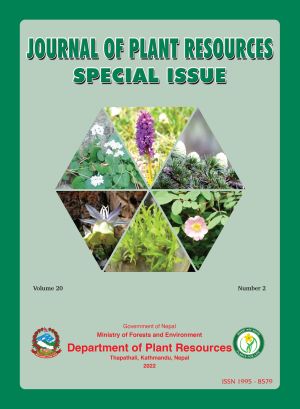Important Ethnomedicinal Arboreal Flora in Nogli Watershed of Sutlej River Catchment, District Shimla, North-West Himalaya, India
DOI:
https://doi.org/10.3126/bdpr.v20i2.57033Keywords:
Ethno pharmacology, Himalayan region, Indigenous communities, Traditional knowledgeAbstract
India is one of the foremost countries not only in Asia, but worldwide famed as far as the wealth of traditional knowledge and floristic richness is concerned. Within India, the state of Himachal Pradesh is rich in plant diversity and in addition is also gifted with rich and diverse heritage of cultural traditions. Arboreal plants form an integral source of readily available, traditional medicines to the indigenous communities of the far-flung remote regions. This study pertains to the important woody flora in the Nogli watershed area of Sutlej River Catchment, which are being utilized by the local communities. Ethnobotanical surveys carried between the years 2020 and 2022 are based on semi-structured questionnaires and group discussions, while reconnaissance survey was carried out in all seasons to understand and analyze the vegetation of the region. Response from 50 respondents covering all age groups was recorded. As an outcome, 44 plant species (26 trees and 18 shrubs) of ethno-medicinal importance were identified from the study area. The plant species are spread across 24 families with Rosaceae being the most dominant. The outcome from this study shall form the baseline data for ethnopharmacological research in future. In addition to this a conservation and management plan can also be chalked out for the species which are heavily extracted from the forests. Such systematic and researched information will add up to an extensive database of the plants used by native communities, and this information could be dispersed to the new generation for awareness and sustainable utilization of plants.




